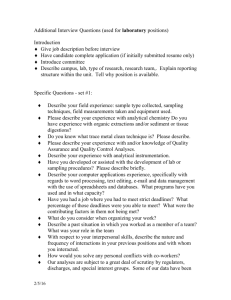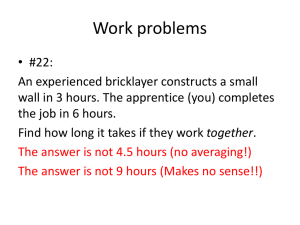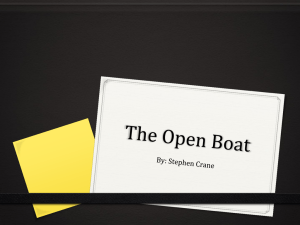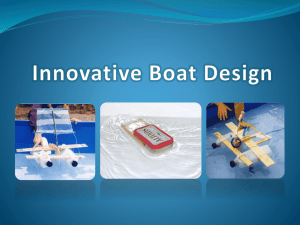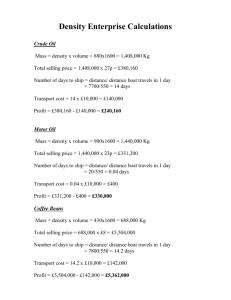introduction
advertisement
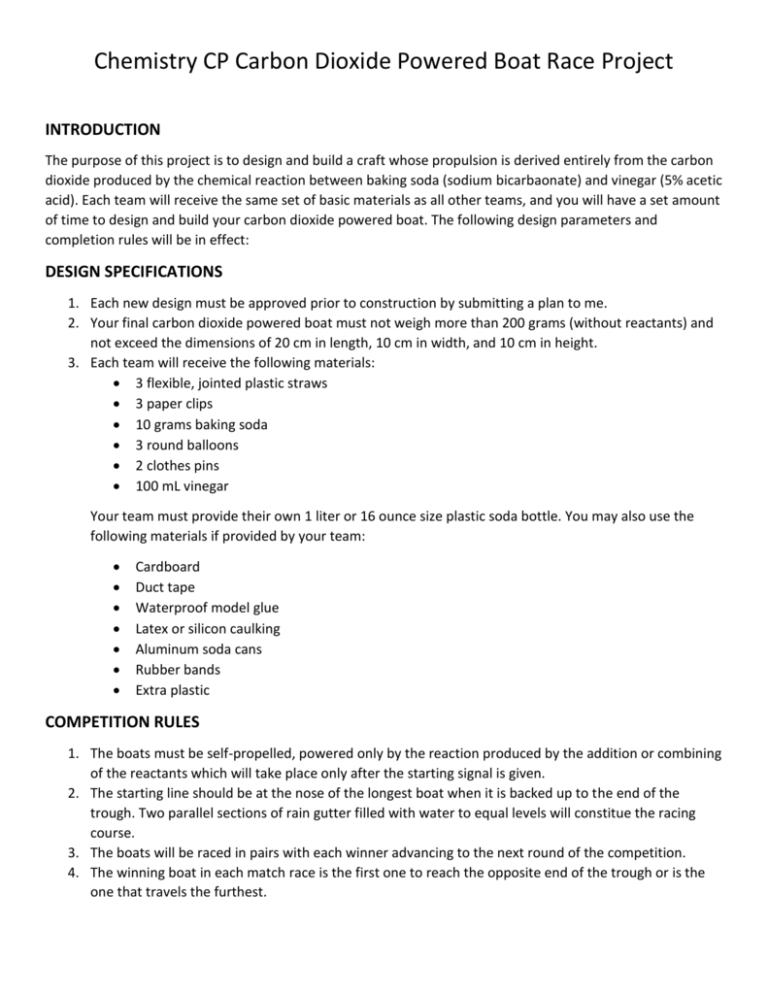
Chemistry CP Carbon Dioxide Powered Boat Race Project INTRODUCTION The purpose of this project is to design and build a craft whose propulsion is derived entirely from the carbon dioxide produced by the chemical reaction between baking soda (sodium bicarbaonate) and vinegar (5% acetic acid). Each team will receive the same set of basic materials as all other teams, and you will have a set amount of time to design and build your carbon dioxide powered boat. The following design parameters and completion rules will be in effect: DESIGN SPECIFICATIONS 1. Each new design must be approved prior to construction by submitting a plan to me. 2. Your final carbon dioxide powered boat must not weigh more than 200 grams (without reactants) and not exceed the dimensions of 20 cm in length, 10 cm in width, and 10 cm in height. 3. Each team will receive the following materials: 3 flexible, jointed plastic straws 3 paper clips 10 grams baking soda 3 round balloons 2 clothes pins 100 mL vinegar Your team must provide their own 1 liter or 16 ounce size plastic soda bottle. You may also use the following materials if provided by your team: Cardboard Duct tape Waterproof model glue Latex or silicon caulking Aluminum soda cans Rubber bands Extra plastic COMPETITION RULES 1. The boats must be self-propelled, powered only by the reaction produced by the addition or combining of the reactants which will take place only after the starting signal is given. 2. The starting line should be at the nose of the longest boat when it is backed up to the end of the trough. Two parallel sections of rain gutter filled with water to equal levels will constitue the racing course. 3. The boats will be raced in pairs with each winner advancing to the next round of the competition. 4. The winning boat in each match race is the first one to reach the opposite end of the trough or is the one that travels the furthest. LAB WRITE-UP 1. Your team lab write-up should include all design plans, modifications, hypotheses, explanations, test run results, and notes that were used in designing and building your carbon dioxide powered boat. You also need to record the following chemical reaction on you write-up sheet. CH3COOH + NaHCO3 CO2 + H2O + NaCH3COO a) List the proper names of each reactant and product in this reaction. b) Balance the equation using the proper coefficients. c) Record the amount of CO2 that was generated. (Stoichiometry!) 2. Answer the following questions: a) Is it better to have a boat with sustained thrust applied over the entire run, or is it more advantageous to have the power expended quickly to produce a burst of great acceleration? How can this be controlled? b) What is the best way to mix the reactants and direct the CO2 to propel the boat? c) Is a keel necessary to keep the boat upright? How should the boat be balanced: nose or tail heavy – ballast high or low in the boat? d) What factors might be changed to improve the efficiency and rate of CO2 production in the reaction? GRADING Your final grade will be based upon the following criteria: 1. Completion of the Lab Write-Up sheet as outlined in the rubric. (50 points) 2. Performance of your Carbon Dioxide Powered Boat (50 points) o CO2 boat fails to work and travels less than 1 meter = 0 points o CO2 boat travels 2 meters = 10 points o CO2 boat travels to end of trough within 2 minutes = 15 points o CO2 boat travels to end of trough within 1.5 minutes = 25 points
